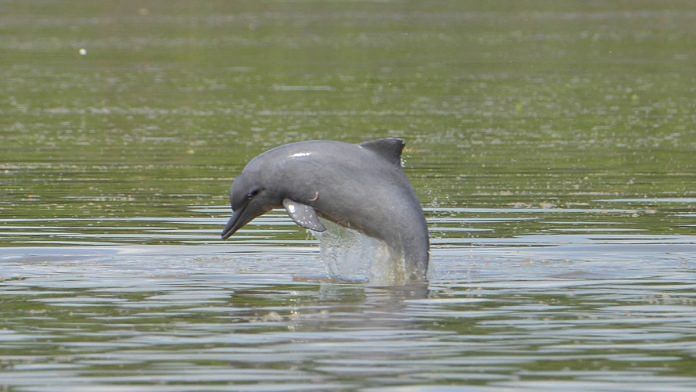Bengaluru: The International Union for Conservation of Nature (IUCN), the global authority on the status of biological diversity of species, has released an updated Red List of Threatened Species this month. The new list documents an additional 31 species as extinct in the wild including species of fishes, sharks, and frogs.
There are now 1,28,918 species on the IUCN Global Species Programme and nearly a third or 35,765 of them are threatened with extinction. These include all of the world’s freshwater dolphins, about one-third of all oak trees, about 45 per cent of a whole family of flowering plants found in the Southern Hemisphere, 26 per cent of all mammals, 40 per cent of all amphibians, 14 per cent of all birds, 33 per cent of all sharks and 33 per cent of corals.
The global body categorises species according to population numbers with ‘Extinct’ describing a complete disappearance and the category ‘Least Concern’ on the opposite end.
Of the total 1,28,918 species assessed by IUCN, in descending order of threat, 902 are ‘Extinct’, 80 are ‘Extinct in the Wild’, 7,762 are ‘Critically Endangered’, 13,285 are ‘Endangered’, 14,718 are ‘Vulnerable’, 7,644 are ‘Near Threatened’, and 66,469 are of ‘Least Concern’.
In India, the list categorises 1,174 species as threatened with extinction, including golden langur (Trachypithecus geei) and Javan rhinoceros (Rhinoceros sondaicus).
“The growing list of extinct species is a stark reminder that conservation efforts must urgently expand,” Bruno Oberle, IUCN’s director-general, said in a statement.
“To tackle global threats such as unsustainable fisheries, land clearing for agriculture, and invasive species, conservation needs to happen around the world,” Oberle added.
Also read: Yale study finds why large mammals like elephants, tigers still exist in India
Species extinct
Three frog species from Central America were declared Extinct, and 22 species across Central and South America were classified as ‘Critically Endangered (Possibly Extinct)’.
These frogs were driven out by the deadly fungal disease called chytridiomycosis, which has been destroying frogs around the world for nearly two decades .
The lost shark (Carcharhinus obsoletus), which was only formally described last year, is now marked as ‘Critically Endangered (Possibly Extinct)’. It was last observed in 1934. Its native habitat is the South China Sea, which has been a victim of extensive overfishing for more than a century.
Lake Lanao, in Philippines, was home to 17 freshwater fishes, of which 15 are ‘Extinct’ and 2 are ‘Critically Endangered (Possibly Extinct)’. The extinctions in this lake were caused by the introduction of predatory non-native species as well as by overfishing.
Nine oak species from Asia are listed as ‘Critically Endangered (Possibly Extinct or Possibly Extinct in the Wild)’.
Also read: Snakehead fish species found in Kerala a living fossil, belongs to unique family, study says
Endangered or Threatened
Oaks are under high threat in China, Mexico, Vietnam, the US, and Malaysia, where land clearance for agriculture and invasive non-native species are the big threats.
“More than 2,300 species of bird, mosses, fungi, insects, lichens and mammals are recorded as using native oaks for food and shelter in the UK, and the same will be true for the 113 species of oak now threatened with extinction. The loss of just one of these tree species has catastrophic consequences for hundreds of other species,” said Paul Smith, Secretary General of BGCI.
Two species of the macadamia nut are listed as Endangered and one as Vulnerable, while 45 per cent of the entire protea family (637 of 1,464) of flowering plants are listed as ‘Critically Endangered’, ‘Endangered’, or ‘Vulnerable’.
This was primarily driven by loss of habitat to agriculture, as well as disruption in natural fire cycles by human activity linked to climate change.
The Red List includes several species of heavily traded medicinal plants including Nagchatri (Trillium govanianum) and Oshá (Ligusticum porteri).
Success stories
The list also includes success stories of conservation, such as the European bison (Bison bonasus), Europe’s largest land mammal, which has moved from ‘Vulnerable’ to ‘Near Threatened’, due to conservation efforts.
The population in the wild for the European bison went up from around 1,800 in 2003 to over 6,200 in 2019. The species was found only in captivity in early twentieth century, and was reintroduced into the wild in the 1950s. The Red List clarifies that the species remains dependent on ongoing conservation efforts.
“It’s fantastic that 17 new assessments in this update, of threatened plant species at Ebo Forest, Cameroon, have already helped the Cameroon government reach a decision to cancel the logging concession for this vast forest. Ebo Forest is crucial for biodiversity,” said Dr Martin Cheek, senior research leader of the Africa team at Royal Botanic Gardens, Kew.
The Oaxaca Treefrog (Sarcohyla celata) also improved from ‘Critically Endangered’ to ‘Near Threatened’ because of conservation action by local communities in Mexico.
“The conservation successes in today’s Red List update provide living proof that the world can set, and meet, ambitious biodiversity targets. They further highlight the need for real, measurable commitments as we formulate and implement the post-2020 global biodiversity framework,” noted Dr Jane Smart, global director of IUCN’s Biodiversity Conservation Group.
Also read: Don’t go by global Red List on animals at risk. They mislabel many



